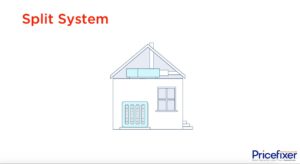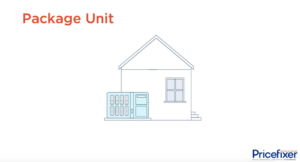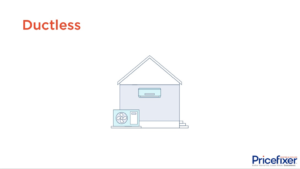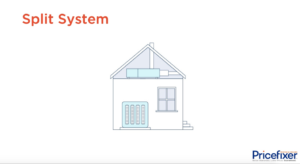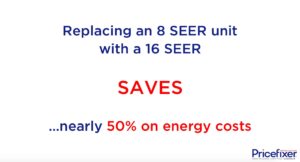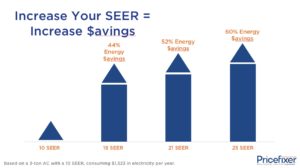What is a Packaged Unit- Heating and Cooling Systems Explained
If you’re shopping around for a new central air conditioning system, you’ve probably discovered that there are three types of systems from which you can choose: Packaged Units, Split Systems and Ductless. All three systems work equally well and offer energy efficient options and state-of-the-art systems that can help you save money and effectively cool your home. In this article, we’ll discuss the packaged air conditioning system in more depth and whether or not it’s a good option for you. As a rule of thumb, it’s almost always a good idea to stick with the type of system you have – if you have been satisfied with it.
What is a Package System?
A packaged unit is a heating and cooling device that has all of its main components (condenser, compressor, and evaporator) combined together in one single, metal-encased “package.” Packaged air conditioners are a great option for homes that don’t have a lot of space for an indoor component. Not to say that a packed unit can’t adequately cool a large home – because it definitely can. Package units tend to be popular in the southeastern regions of the U.S. where homes don’t typically have basements or crawl spaces, but they can be used in any region.
A packaged unit hooks up to a home’s ductwork to pull warm air out of the house and replace it with cool air. The unit is located outside the home usually on a concrete slab next to the house, or, to save even more space, installed on the roof.
What Is the Difference Between a Split System and a Packaged Unit?
A split system has some of the air conditioning components located outside the home, such as the fan, compressor, and condenser, and the rest of the components located inside the home, such as the evaporator coil, air handler and blower. The advantage of a split system is that the indoor components are kept in a controlled, non-harsh type of environment and therefore have a longer life-span than if they were located outside. Another advantage is that split systems come in higher energy-efficient options with SEER ratings in the twenties, whereas packaged units typically have 14 SEER or 16 SEER options. The advantages of a packaged unit over a split system are:
- They are easier to install. All the components of the system are not only housed in one convenient unit, but they are assembled in a factory in a controlled environment where the refrigerant charge and other parts are already in perfect working order. Split systems are more complicated to install, increasing the possibility of installation challenges.
- They are huge space savers. Without a second, indoor section to install, packaged units are perfect for homes without the extra space.
- Easier maintenance. All parts are located in one place and conveniently located outside, which makes maintenance and repairs easier.
- It’s quieter. Since the entire system is located outside, the noise level inside the home is much lower.
Types of Package Units
There are several different packaged options to choose from depending on your cooling or heating needs:
Cooling only packaged air conditioner: Electric-power unit with no heating elements for those climates that are typically warm year-round.
Packaged air conditioner with heat: Electric-powered air conditioner that also has a heating element. Electricity heats up the element warming the air that flows over it. This warm air moves through the ducts to raise the temperature inside your home. This type of system is common in warmer climates where the heat is used only occasionally.
Packaged gas/electric systems: This type of system offers high-efficiency electric air conditioning during the warmer months and the efficiency of a gas furnace for heating during the cooler months. These are common in colder regions as gas heat is an energy efficient way of heating a home. Do you have gas or electric? You can learn more by using the instant low price quote tool here.
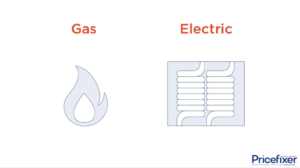
Packaged heat pumps: A heat pump moves warm air from outside the home to inside the home during cooler months, and then, reversing the cycle, moves warm air from inside the home to outside when cooler temperatures are desired inside. Powered by electricity, heat pumps move warm air around instead of generating heat which makes them particularly energy efficient. Heat pumps work best in moderate to mild climates.
Dual fuel heat pump (heat pump and gas furnace): Utilizing the heat pump to pull heat from the outside air to warm your home, the furnace part of this system doesn’t kick on until it’s around 35 degrees or less outside, making it a very energy efficient system, perfect for cold climates.
Electric furnace and heat pump: Similar to the heat pump plus gas furnace system, the heat pump does the majority of the air cooling and heating here as well, with a backup electric furnace that kicks on only when there is not enough heat in the air for the heat pump to sufficiently warm the home.
What type of air conditioning system is best for your regional climate?
It’s not just whether your climate is mostly warm or mostly cold, but also whether you have more of a dry climate as opposed to a humid climate that will affect the type of air conditioning system that will work best for you.
Packaged air conditioning systems are a great option for cooling your home, however, if you happen to live in a warm, humid climate like Florida, you may discover that split system air conditioners are more common. This is due to several factors: 1) an air conditioner in a hot, humid climate is going to work a lot harder to keep a home cool than one in a milder climate, so having a high energy-efficient unit is important. Split systems come with higher SEER (Seasonal Energy Efficiency Ratio) ratings than packaged units do, making them the preferred system for many due to their higher efficiency options; and, 2) split systems do a better job of dehumidifying a home than packaged units do, and a less humid home is a more comfortable home.
For drier climates, such as Las Vegas, packaged units that combine electric air conditioning with a gas furnace for heating are an excellent option. Also, packaged systems that combine a heat pump with a gas furnace are popular in drier climates as the heat pump is highly energy efficient because it moves warm air around to cool and heat rather than using energy to generate heat.
The heat pump plus gas furnace system is also common in colder climates as using natural gas or propane to heat a home is an energy efficient solution many northern homes employ. Similarly, the electric furnace and heat pump is frequently used in colder climates as well.
System Components of a Packaged Air Conditioner
When purchasing a packaged air conditioner, it’s useful to know the various components within that make it work. This way you’ll be able to “talk shop” with the contractor who is installing it and better understand how to perform maintenance on it.
The main components of a packaged AC unit are:
- Fan for moving air through the system
- Evaporator coils that cause the refrigerant to evaporate into gas thereby removing heat and moisture from the air
- A compressor pumps the refrigerant between the evaporator coil and condenser coil
- Condenser coil that removes heat from refrigerant vapor converting into liquid form
- Refrigerant lines contain the refrigerant traveling between coils
Maintenance Tips for Your Packaged Unit
Knowing the components of your packaged air conditioning system, how they work, and potential problems they may encounter that could affect your system’s performance will help you stay on top of maintaining your unit, which will go a long way in extending the life of your system. The compressor, for example, is the heart of an air conditioner and if this important (and expensive) component breaks down, you may find yourself opting to just purchase a whole new system.
What does a compressor in a packaged unit do?
The compressor, powered by a motor, compresses refrigerant into a high-pressure gas and forces it into the condenser coil where its heat is released and the refrigerant condenses into a liquid. The liquid refrigerant is then pumped into the evaporator coil where it evaporates into a gas (vapor), and in doing so, removes heat and moisture from the air. As a gas, the refrigerant returns to the compressor where the whole cycle begins again. Common causes of compressor malfunctions are dirty and gummed-up condenser coils, blocked refrigerant lines, contaminants in the system (such as dirt, debris, moisture, leaves, etc.), and inadequate lubricant levels can cause serious problems for the compressor.
Routine maintenance by a licensed professional is key in maintaining an efficiently-running system with a long life ahead of it. Besides routine maintenance, it’s important that you don’t delay when it comes to repairs. If you hear an unusual knocking, rattling, grinding, or rumbling sound, call your repairman immediately before even more damage is done. Finally, don’t forget to replace the filters regularly, especially during the summer months when your air conditioner is working overtime.
Since your air conditioner plays such an important part of keeping you comfortable in your home and considering it’s one of the largest expenditures on your utility bill, purchasing a new AC system should be thoroughly researched so you can make the best decision for your home and budget. Understanding the benefits of a packaged air conditioning system, how it works to cool (or heat) your home, and how to take care of it will help you have a long and enjoyable experience with your packaged air conditioning system.
To learn more about the heating and cooling options available to you, click here.
